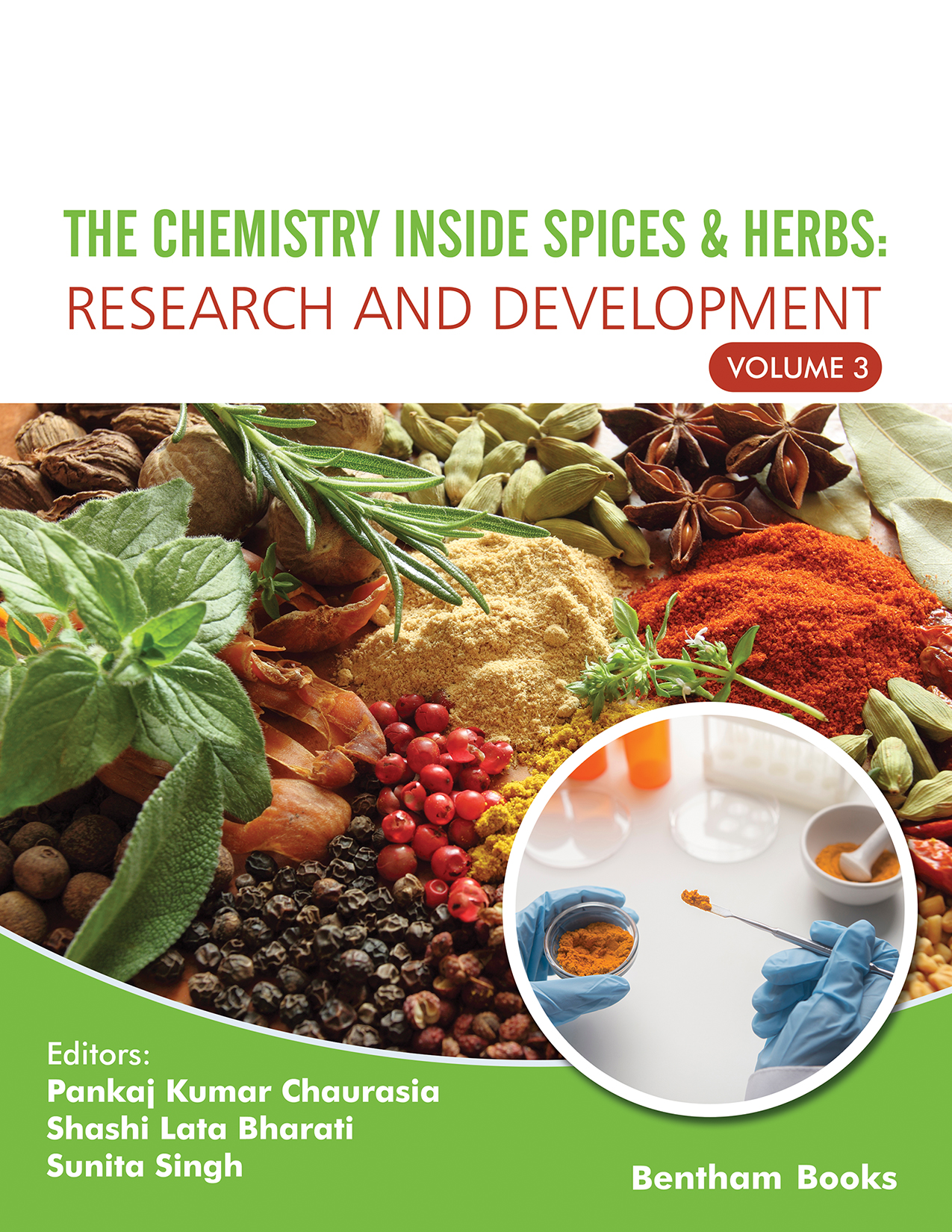VOLUME-3 of the book series “The Chemistry inside Spices and Herbs: Research and Development” is an excellent collection of nine chapters having extensive contents related to the detailed exploration of chemistry, pharmacology, and roles of different medicinally treasured plants (herbs and spices) and their constituents. All the chapters have been skilfully written by experts of the field. This book volume covers elaborated reviews on the chemistry and pharmacological properties of different medicinal plants viz. plants and herbal products in PCOS (Polycystic ovary syndrome), herbs in the management of rheumatoid arthritis and related inflammatory conditions, Orchid-derived natural flavoring and therapeutic agents’ (Vanillin and Vanilla) varied pharmaceutical applications, along with their roles in food industry, and fragrance industry, Silymarin in the treatment of hepatic disease, pharmacological properties of Hygrophila spinosa along with traditional applications, key diagnostic characteristics, and phytochemical profile, the pharmacological and chemical paradigms of Tulsi (Ocimum), chemistry and biological activity of isolated combretastatins from Combretum caffrum and current clinical status as anticancer medicines, herbs and spices to treat different cancers, and herbs in the treatment of diabetes.
In Chapter 1 written by Onder et al., with the most recent publications based on in vitro, preclinical, and clinical research as a novel viewpoint, a general assessment of the plants and herbal products in PCOS (Polycystic ovary syndrome) has been compiled from the preclinical and clinical point of view. Additionally, based on the ethnopharmacological characteristics of PCOS, traditional uses of the plants have also been assessed. With the hope of conducting herbs and developing new herbal-based products that are beneficial to PCOS, the impacts and underlying mechanisms of herbal medications used as a therapy for PCOS were also discussed.
In Chapter 2 written by Bharati et al., the function of medicinal plants, herbs, dietary supplements, and isolated bioactive compounds from plants in the treatment and management of rheumatoid arthritis is discussed, along with an explanation of how these substances work pharmacologically.
Chapter 3 written by Roy et al., highlighted the Vanilla’s varied applications in the food industry, fragrance industry, and pharmaceutical sector. This chapter may serve as a medium for interest in additional research into certain bioactive chemicals that will advance technical, scientific, and remedial values.
In Chapter 4 written by Singh et al., the potential of Silymarin in the treatment of hepatic disease has been discussed and explored.
Chapter 5 written by Satpathy et al., serves as a handy reference for traditional applications, key diagnostic characteristics, phytochemical profile, and pharmacological qualities of Hygrophila spinosa, which will be helpful to future researchers as they explore the plant's phytopharmacology through mechanistic research.
Chapter 6 written by Dobhal et al., has explored the pharmacological and chemical paradigms of Tulsi (Ocimum) present globally as it has been found to show the activity as antimicrobial, antimalarial, anthelmintic, anti-diarrheal, anti-oxidant, anti-mosquito agents, anti-inflammatory, chemo, and radio-protective, anti-cataract, cardio-protective, anti-hypertensive, anti-diabetic, antiseptic drugs, anti-hyperlipidemic, etc. in various studies.
Chapter 7 written by Patel et al., aimed to clarify the chemistry and biological activity of isolated combretastatins from Combretum caffrum as well as to examine their development, mode of action, research using computer-aided drug design, and current clinical status as anticancer medicines.
Chapter 8 by Agrawal et al., is centered on diabetes and accessible diabetic treatments, with a particular emphasis on herbal medicine and clinical trials of these herbal plants.
Pankaj Kumar Chaurasia
P.G. Department of Chemistry
L.S. College, B.R. Ambedkar Bihar University
Muzaffarpur-842001, Bihar
India
Shashi Lata Bharati
Department of Chemistry
North Eastern Regional Institute of Science and Technology (NERIST)
Nirjuli-791109, Arunachal Pradesh
India
&
Sunita Singh
Department of Chemistry
Navyug Kanya Mahavidyalaya, University of Lucknow
Lucknow- 226004, Uttar Pradesh
India

